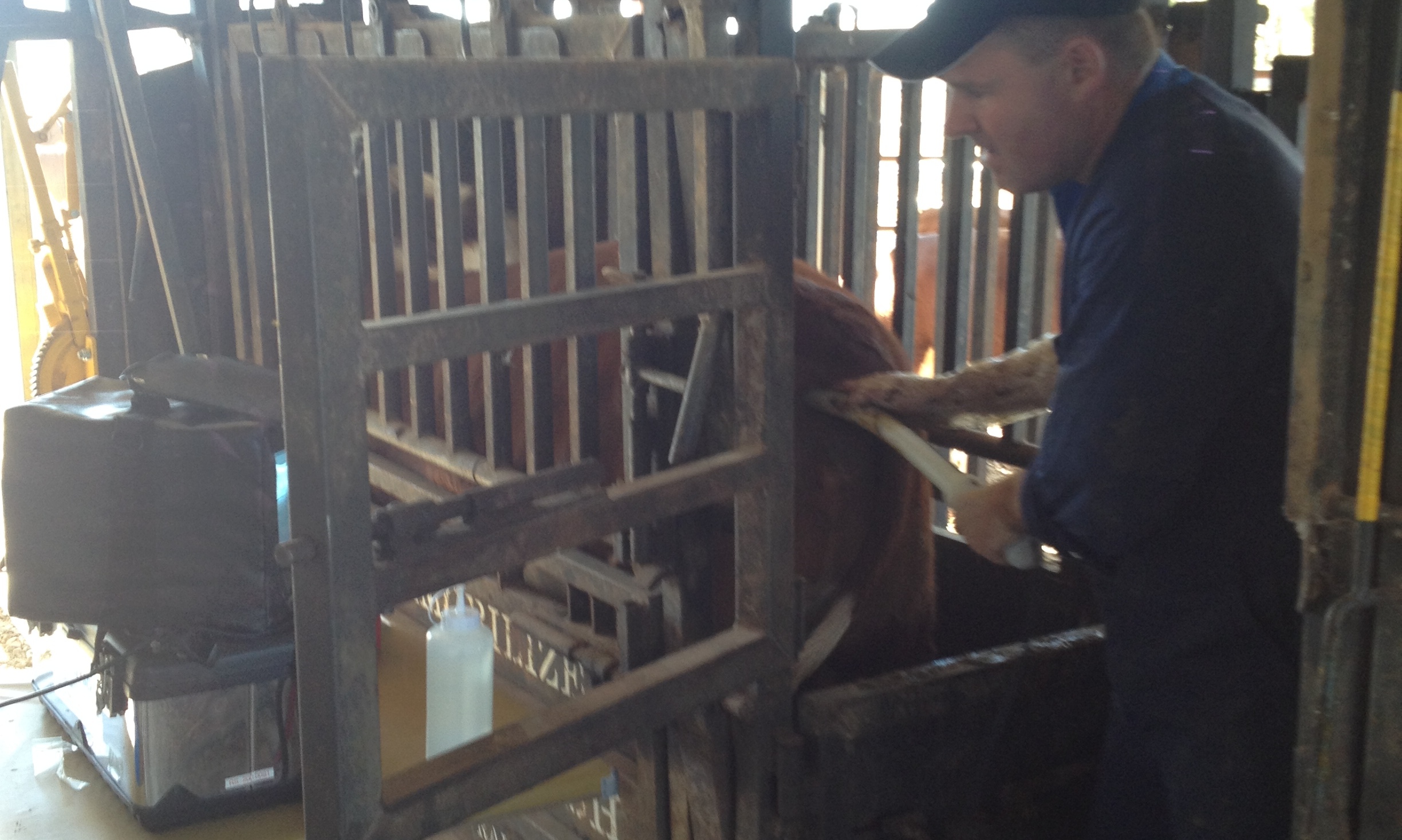Its great to be back after a short break over Christmas and the New Year. Starting 2015 has been really exciting with a few new projects. I've been catching up on some of the agricultural news from around the country and internationally. One particular story did catch my eye.
It was about a producer in England who had been forced to cull his herd of cows as a result of their aggression towards himself and his staff. The story described these particular animals as the German Heck breed, and were breed in the 1930's and 1940's. With the links to the Nazi party, the strangeness of the breed and the danger to people this story has had world wide attention!
I'm not really in any position to make a comment on the animals, the farmer or the story. Rather it was a story that made me start thinking about handling cattle and the importance of focussing on temperament within a herd.
I reckon temperament is one of the most important things you should be selecting for in your herd. It is a highly heritable trait. So focussing on breeding cattle with better temperaments will show improvements within the herd.
There are plenty of ways you can focus on, and select for better temperament. Within your herd the most obvious starting point is to identify any animals that show aggression towards you or other people.
These animals really have no place in your herd, and are dangerous. You should remove them from your herd and if your records are good enough, look at the behaviour of the progeny and consider their temperament in the overall direction of your program.
An objective method of assessing temperament is to record the behaviour of each animal in the crush or the race. Let each animal come up and stand in the crush or the race by itself. Note down the ones that stand calmly, the ones that are restless and the ones that can't settle and try to jump or exit the race.
If you do this with every animal you can identify the quiet ones through to the ones with much poorer temperament.
Other methods to assess temperament include a flight speed test. This basically is two light beams set apart at the end of the crush. When the animal leaves the crush it breaks the first beam, and then shortly afterwards the second beam. How quickly it breaks the beams is related to its speed and overall temperament. Many breeders have used both crush scores and flight speed to identify animals for breeding, and these scores can be submitted for inclusion into EBV records.
Selection for better temperament and removal of individuals are the two key strategies for improving your animals temperament. However I reckon its just as important to remember that how you handle and treat your animals will also impact on their behaviour.
Cattle are herd animals, and don't like to be left alone, particularly in strange or threatening places. If you do have to put animals in a yard, try and put them with a mate. This will help them feel more safe.
Cattle have a flight zone which they rely on to keep them out of danger. Any perceived threats, including people, results in them moving away. If they can't move away, such as in the yards, then they often fall back on the only option which is to threaten the thing causing them fear. This is why formerly quiet animals may suddenly become more anxious or aggressive.
Cows will be very protective of young calves around people and especially dogs. Again the quietest cow can become very threatening if she perceives her calf is in danger.
So it is important to understand how to work with cattle, to recognise the difference between an animal trying to give itself space from a threat, and an animal that is genuinely aggressive. When you take the time to learn how to work with cattle safely, you can avoid causing yourself and the cow unnecessary stress or anger. And the ones that are genuinely dangerous, sell them out of your herd as soon as its safe to do so.







